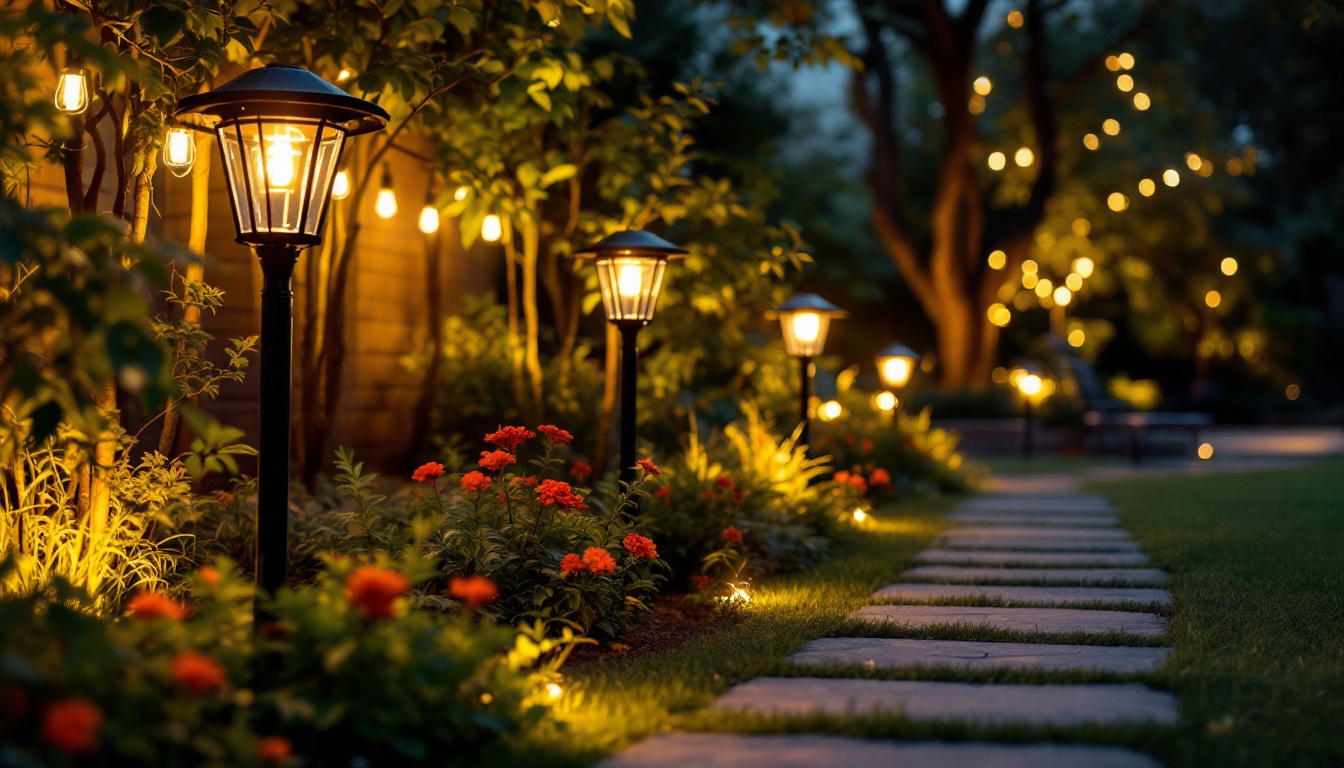
Track lighting has emerged as an essential component in the design and functionality of retail spaces. While many lighting projects focus on the aesthetic appeal and energy efficiency of fixtures, track lighting often remains an overlooked element. This article delves into the significance of track lighting in retail environments, exploring its versatility, benefits, and best practices for implementation.
Track lighting consists of a system of lights mounted on a track, allowing for adjustable positioning and direction. This flexibility makes it an ideal choice for retail stores, where the ability to highlight products and create dynamic displays can significantly impact customer experience and sales. The versatility of track lighting not only enhances aesthetic appeal but also plays a crucial role in guiding customers through the store, subtly influencing their purchasing decisions by illuminating key areas and products.
A typical track lighting system comprises several key components: the track itself, the fixtures, and the power supply. The track can be mounted on ceilings or walls, and it serves as the backbone of the lighting system. Fixtures, which can vary in style and design, are attached to the track and can be moved or adjusted as needed. The power supply connects to the track, providing the necessary electricity to illuminate the fixtures. In addition to these components, accessories such as dimmers and color filters can be incorporated to enhance the lighting effects, allowing retailers to create different moods and atmospheres that align with their brand identity.
There are primarily three types of track lighting systems: line voltage, low voltage, and monorail. Line voltage systems operate at 120 volts and are commonly used in residential and commercial settings. Low voltage systems, typically operating at 12 or 24 volts, offer enhanced design flexibility and energy efficiency. Monorail systems, a more contemporary option, utilize a single rail for a sleek appearance and can accommodate various fixture styles. Each type of system has its own unique advantages; for instance, low voltage systems often provide a more focused beam of light, making them ideal for showcasing intricate details in high-end merchandise, while line voltage systems can support a wider variety of fixture designs.
One of the most significant advantages of track lighting is its adaptability. Retailers can easily reposition fixtures to accommodate changing displays, seasonal promotions, or new product lines. Additionally, track lighting allows for focused illumination, drawing attention to specific merchandise and enhancing the shopping experience. The ability to adjust the angle and position of the lights also means that retailers can create dramatic effects, such as spotlighting a featured product or creating a warm, inviting ambiance in a clothing section. Furthermore, track lighting can be integrated with smart technology, enabling retailers to control lighting remotely and adjust settings based on foot traffic or time of day, optimizing energy use and enhancing the overall shopping environment.
In retail spaces, lighting plays a crucial role in shaping the atmosphere and influencing customer behavior. Track lighting can enhance these aspects in several ways, creating an inviting and engaging environment.
Track lighting can be used to create various moods within a retail space. By adjusting the intensity and direction of the lights, retailers can establish a warm, welcoming atmosphere or a bright, energetic environment. This flexibility allows businesses to tailor their lighting to align with their brand identity and customer expectations. For instance, a boutique selling luxury goods might opt for softer, warmer hues that evoke a sense of exclusivity and comfort, while a sports apparel store may choose brighter, cooler tones to energize shoppers and reflect an active lifestyle.
Additionally, the strategic placement of track lighting can enhance specific areas within the store, such as fitting rooms or promotional displays. By creating zones of light, retailers can guide customers through their shopping journey, subtly encouraging them to explore different sections and discover new products. The interplay of light and shadow can also add depth to the retail space, making it visually stimulating and inviting.
One of the primary functions of track lighting in retail is to highlight products effectively. By directing light onto specific displays or merchandise, retailers can draw customers’ attention and encourage purchases. The ability to focus light on key items can make a significant difference in sales, especially for high-margin products. For example, a jewelry store might use track lighting to create a spotlight effect on a stunning diamond necklace, making it the focal point of the display and enticing customers to take a closer look.
Moreover, the color temperature of the track lighting can be adjusted to enhance the appearance of different products. Warm light can make food items appear more appetizing, while cooler light can enhance the vibrancy of clothing colors. This careful consideration of lighting not only improves product visibility but also influences the emotional response of customers, ultimately driving purchasing decisions.
Visual merchandising is a critical aspect of retail strategy, and track lighting plays a vital role in its success. By illuminating displays, retailers can enhance the visual appeal of their products and create cohesive themes throughout the store. Track lighting can also be used to emphasize textures, colors, and shapes, making products more enticing to customers. For instance, a home goods store might use track lighting to highlight the intricate patterns of textiles or the sleek lines of modern furniture, drawing attention to the craftsmanship and quality.
Furthermore, track lighting allows for versatility in visual merchandising. Retailers can easily adjust the positioning of lights to accommodate seasonal displays or promotional events, ensuring that the store remains fresh and engaging for repeat customers. This adaptability not only enhances the shopping experience but also allows retailers to experiment with different layouts and presentations, keeping the environment dynamic and appealing. By integrating track lighting into their visual merchandising strategies, retailers can create a captivating shopping experience that resonates with their target audience.
To maximize the benefits of track lighting in retail stores, several best practices should be considered during the planning and installation phases.
Before installing track lighting, it’s essential to assess the retail space thoroughly. Consider the layout, ceiling height, and existing fixtures. Understanding the space will help determine the appropriate type of track lighting system and the optimal placement of fixtures to achieve the desired effect.
Selecting the right fixtures is crucial for achieving the intended lighting effect. Retailers should consider the style, size, and beam angle of the fixtures. For instance, narrow beam fixtures are ideal for spotlighting specific products, while wider beam fixtures can provide general illumination. A mix of different fixture types can create a dynamic and visually interesting environment.
Dimming controls can enhance the versatility of track lighting systems. By allowing retailers to adjust the brightness, they can create different atmospheres for various times of day or special events. Dimming also contributes to energy efficiency, as it reduces energy consumption when full brightness is not necessary.
While track lighting offers numerous benefits, there are common pitfalls that lighting contractors should be aware of to ensure successful implementation.
A common mistake is neglecting the layout of the track lighting system. Poorly planned layouts can lead to uneven illumination, creating dark spots or overly bright areas. It’s essential to develop a lighting plan that considers the flow of the retail space and the placement of products.
In an era of increasing energy costs and environmental awareness, overlooking energy efficiency can be detrimental. Selecting LED fixtures for track lighting can significantly reduce energy consumption while providing high-quality illumination. Additionally, incorporating smart controls can optimize energy use further.
Maintenance is another critical aspect often overlooked in lighting projects. Track lighting systems should be designed with accessibility in mind, allowing for easy replacement of bulbs and cleaning of fixtures. This consideration can save time and resources in the long run.
Examining successful implementations of track lighting in retail stores can provide valuable insights into best practices and innovative approaches.
A prominent fashion retailer recently revamped its flagship store using track lighting to enhance product displays. By strategically placing fixtures above key merchandise, the retailer created a visually striking environment that highlighted seasonal collections. The result was a significant increase in foot traffic and sales, demonstrating the power of effective lighting design.
A home goods store utilized track lighting to transform its layout and improve customer navigation. By illuminating pathways and key displays, the store created an inviting atmosphere that encouraged exploration. The flexible nature of track lighting allowed for easy adjustments as new products were introduced, ensuring the store remained fresh and engaging.
An electronics retailer adopted a cutting-edge approach by integrating track lighting with smart technology. By using motion sensors and dimming controls, the store could adjust lighting based on customer traffic and time of day. This innovative solution not only enhanced the shopping experience but also reduced energy costs, showcasing the potential of modern track lighting systems.
As the retail landscape continues to evolve, so too will the role of track lighting. Emerging technologies and design trends are set to shape the future of lighting in retail environments.
Smart technology is becoming increasingly prevalent in retail spaces. The integration of track lighting with smart systems allows for greater control and customization of lighting. Retailers can adjust lighting remotely, create schedules, and even analyze customer behavior to optimize the shopping experience.
With a growing emphasis on sustainability, track lighting systems are expected to evolve towards more eco-friendly solutions. The adoption of energy-efficient LEDs and sustainable materials will likely become standard practice, aligning with consumer preferences for environmentally responsible products.
As retail spaces become more experiential, track lighting will play a crucial role in creating immersive environments. Innovative design concepts, such as dynamic lighting that changes based on customer interaction or seasonal themes, will enhance the overall shopping experience and keep customers engaged.
Track lighting is not just an afterthought in retail lighting design; it is a vital component that can significantly influence customer experience and sales. By understanding its benefits, implementing best practices, and avoiding common pitfalls, lighting contractors can create effective and dynamic retail environments. As technology and design trends continue to evolve, the potential for track lighting in retail spaces will only expand, making it an essential consideration in any lighting project.
Ready to transform your retail lighting design with the versatility and sophistication of track lighting? At LumenWholesale, we provide lighting contractors with the highest quality, spec-grade track lighting solutions at unbeatable wholesale prices. Our commitment to cutting out the middleman means you get superior products at the best value, with the convenience of free shipping on bulk orders. Elevate your retail projects with our reliable, high-performance lighting options. Discover the perfect blend of quality, affordability, and convenience. Take the next step and explore our Wholesale Lighting at the Best Value today.

Illuminate your projects with style and efficiency using hanging chain lights.

Discover how solar power lights are revolutionizing outdoor lighting projects by providing sustainable, cost-effective, and versatile solutions.

Discover the ultimate guide to solar powered outdoor wall sconces with insights from top lighting contractors.

Discover the pitfalls lighting contractors often face with Tekscrews.